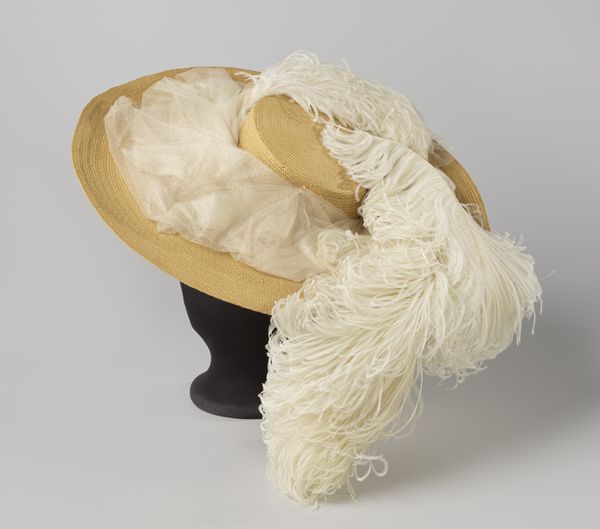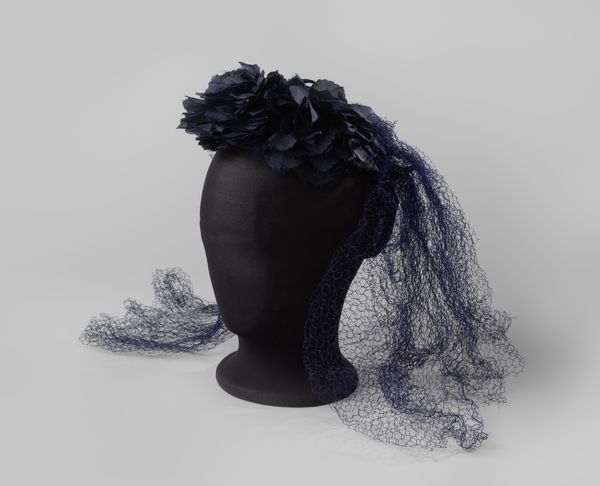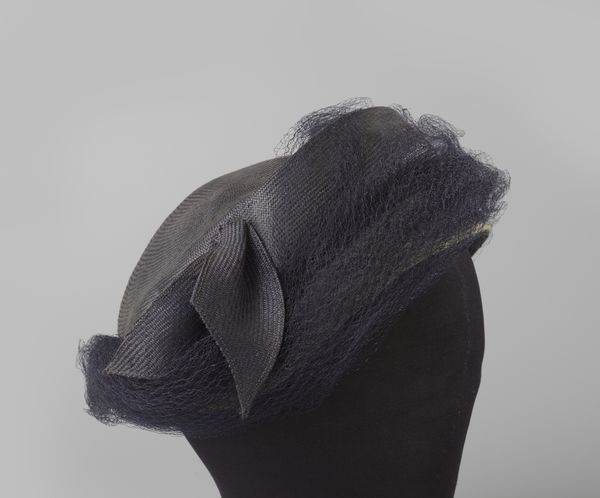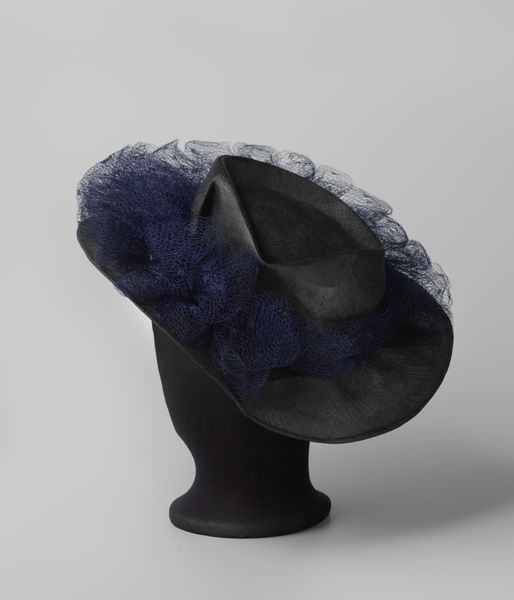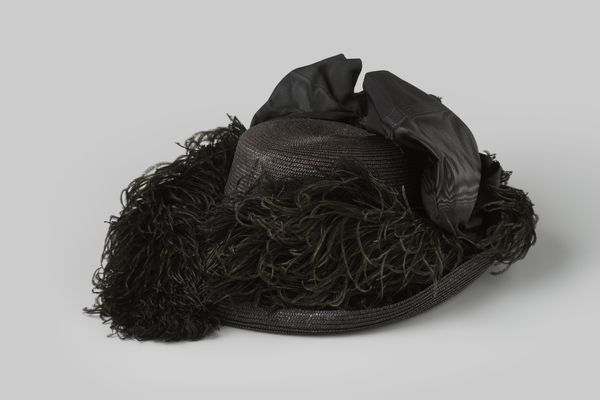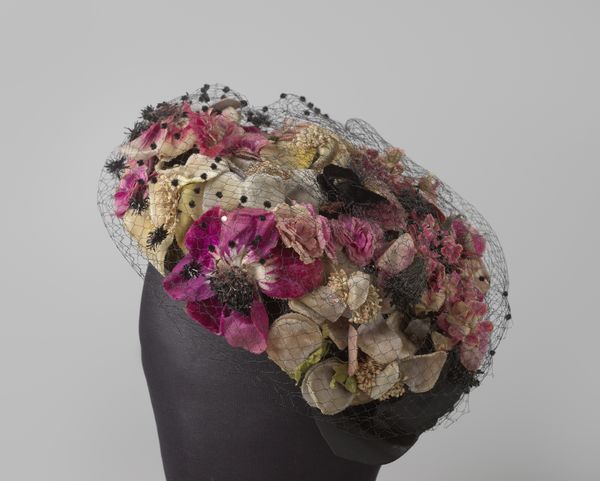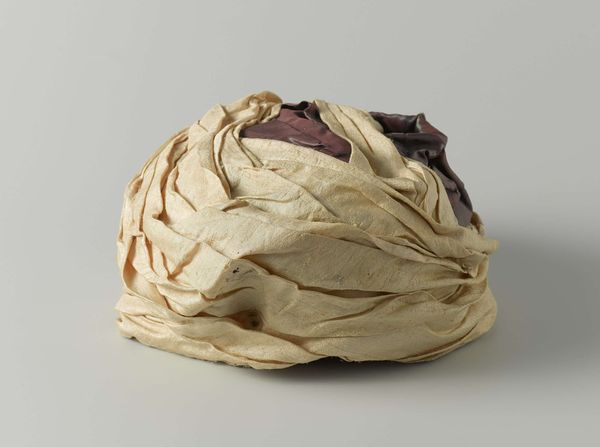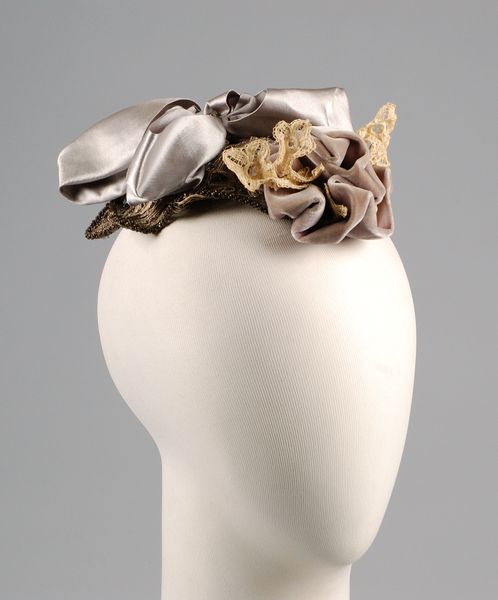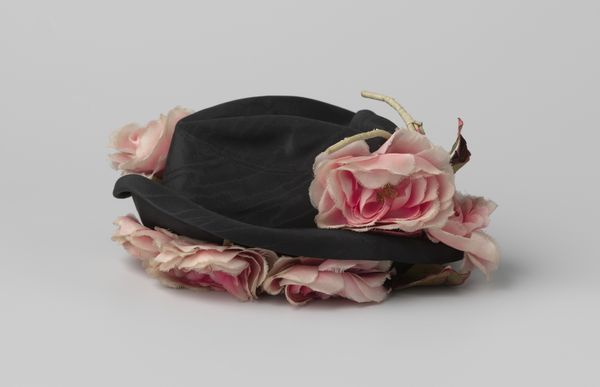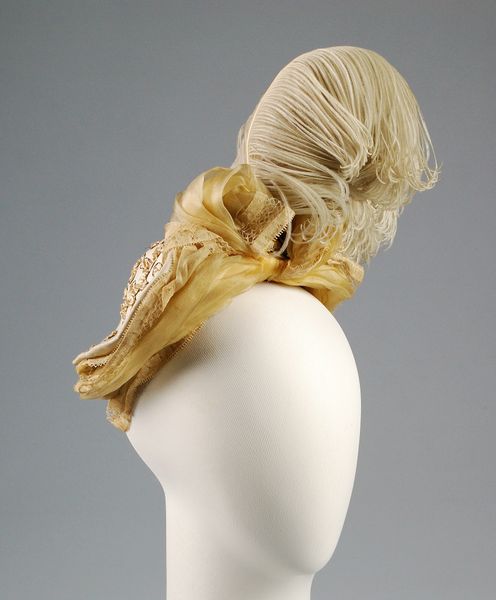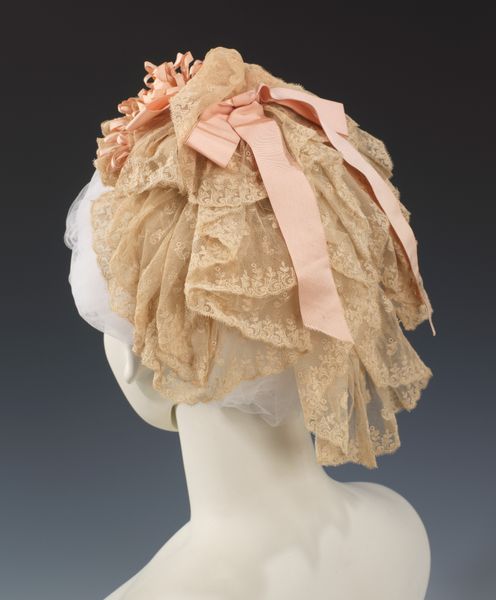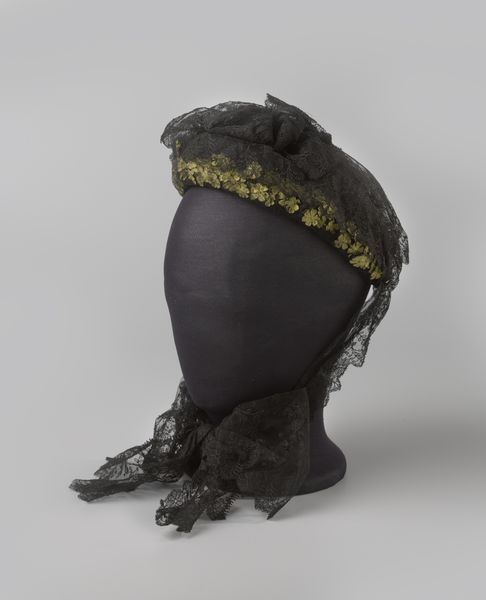
Hoed voor een meisje, van raffia en witte mousseline versierd met roze rozen c. 1900
0:00
0:00
textile, photography
#
still-life-photography
#
product fashion photography
#
textile
#
photography
#
product photography
Dimensions: height 17 cm, circumference 95 cm, width 30 cm
Copyright: Rijks Museum: Open Domain
Editor: Here we have a photograph from around 1900, from the English Warehouse, depicting a girl’s hat fashioned from raffia and white muslin, adorned with pink roses. The frills and soft focus give it such an ephemeral quality, like something from a dream. What historical context is important here? Curator: This image, seemingly a simple product shot, speaks volumes about the cultural and social landscape of the time. Photography was gaining prominence as a tool for commerce and shaping perceptions. This piece likely served a dual purpose: advertising a product – the hat – and conveying an aspirational lifestyle of elegance and refinement. The hat itself, with its delicate materials, would have been a status symbol, accessible to a particular class. Editor: So the photograph is not *just* about selling the hat, it’s selling an ideal? Curator: Precisely! And consider who controlled the means of image production and distribution at this time. Companies like the English Warehouse held significant power in shaping consumer desires and reinforcing class distinctions through these curated visual narratives. How do you think this type of imagery might influence the way women saw themselves and their place in society? Editor: It seems to put a lot of pressure to meet a beauty ideal while using commercial objects as stepping stones. This one photograph becomes quite charged when you unpack the cultural significance and power structures that influenced the aesthetic! Curator: Absolutely. Even a seemingly innocuous image like this offers a glimpse into the complex relationship between art, commerce, and social control. Thinking about it that way challenges us to view historical photography through a more critical lens.
Comments
No comments
Be the first to comment and join the conversation on the ultimate creative platform.
